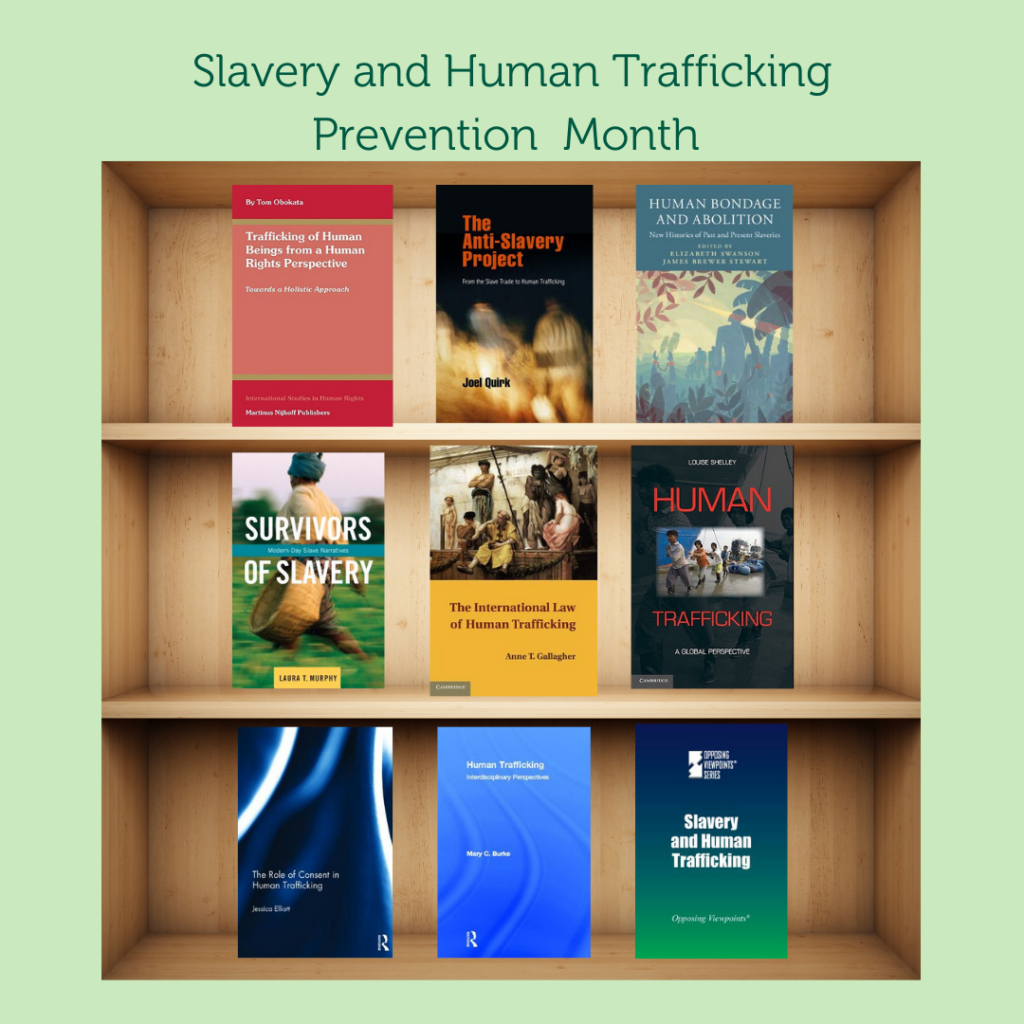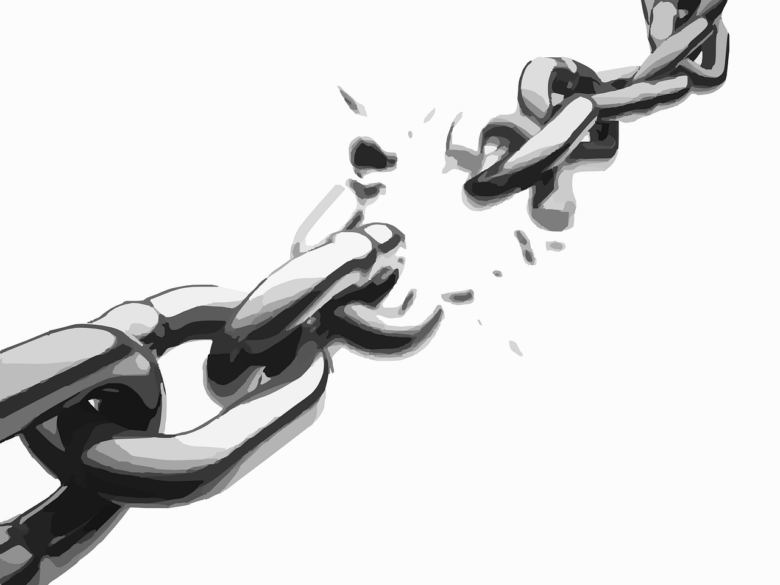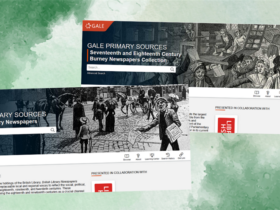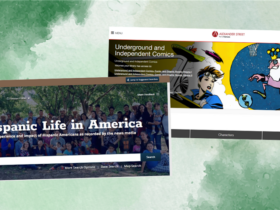January has been celebrated as National Slavery and Human Trafficking Prevention month since 2011. By presidential decree, it will culminate with a National Freedom Day on February 1, 2021.
Human trafficking is considered a mondern version of slavery. It involves the use of force, fraud, or coercion to obtain some type of labor or commercial sex act. It is estimated that there are 4.5 million victims of sexual exploitation and 21 million victims of forced labor.
To bring awareness to this problem, Binghamton University librarians have created a reading list.

Reading List:
The Anti-Slavery Project: From Slavery to Human Trafficking
Human Bondage and Abolition: New Histories of Past and Present Slaveries
Survivors of Slavery: Modern Day Slave Narratives
Human Trafficking: Interdisciplinary Perspectives
Role of Consent in Human Trafficking
The International Law of Human Trafficking
Trafficking of Human Beings from a Human Rights Perspective: A Holistic Approach
Sources:
Department of Homeland Security. “What Is Human Trafficking?,” May 24, 2013. https://www.dhs.gov/blue-campaign/what-human-trafficking.
National Human Trafficking Hotline. “Hotline Statistics.” Accessed January 8, 2021. https://humantraffickinghotline.org/states.
The White House. “Proclamation on National Slavery and Human Trafficking Prevention Month, 2021.” Accessed January 8, 2021. https://www.whitehouse.gov/presidential-actions/proclamation-national-slavery-human-trafficking-prevention-month-2021/.
United Nations : Office on Drugs and Crime. “What Is Human Trafficking?” Accessed January 8, 2021. //www.unodc.org/unodc/en/human-trafficking/what-is-human-trafficking.html. U.S. Department of Defense. “National Slavery and Human Trafficking Prevention Month.” Accessed January 8, 2021. https://www.defense.gov/News/Special-Reports/0118_National-Slavery-Human-Trafficking-Prevention-Month/.






